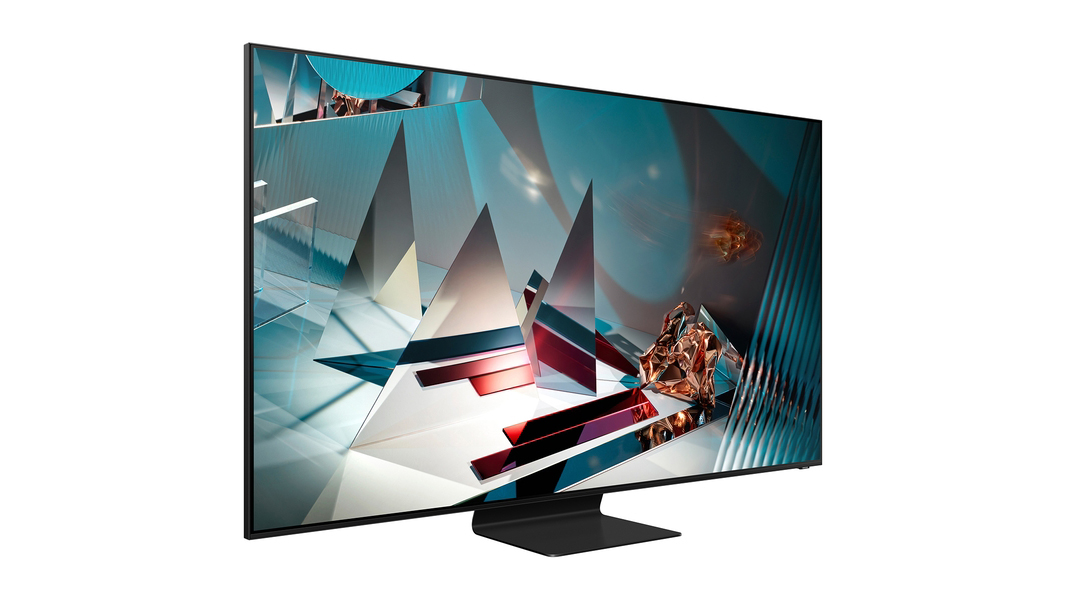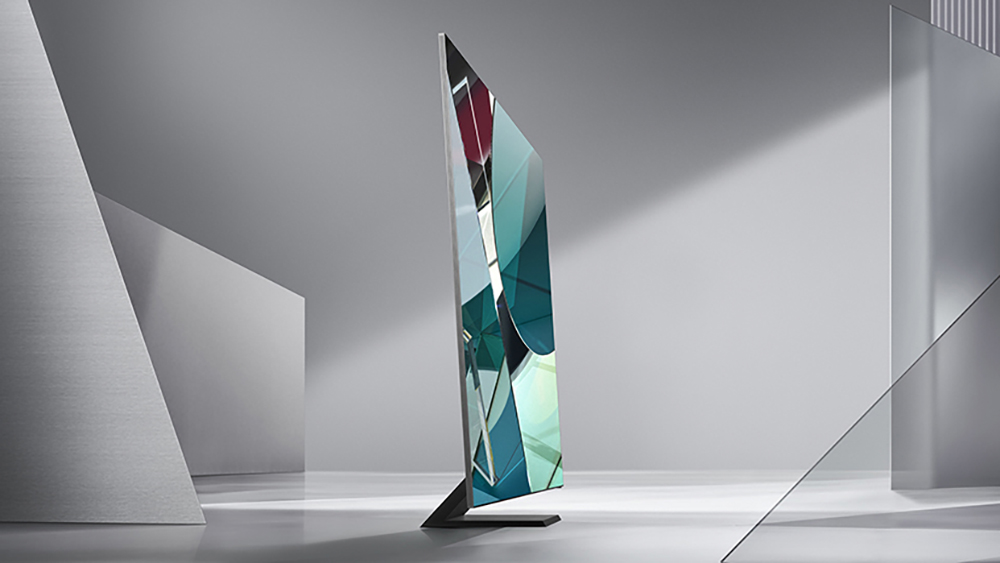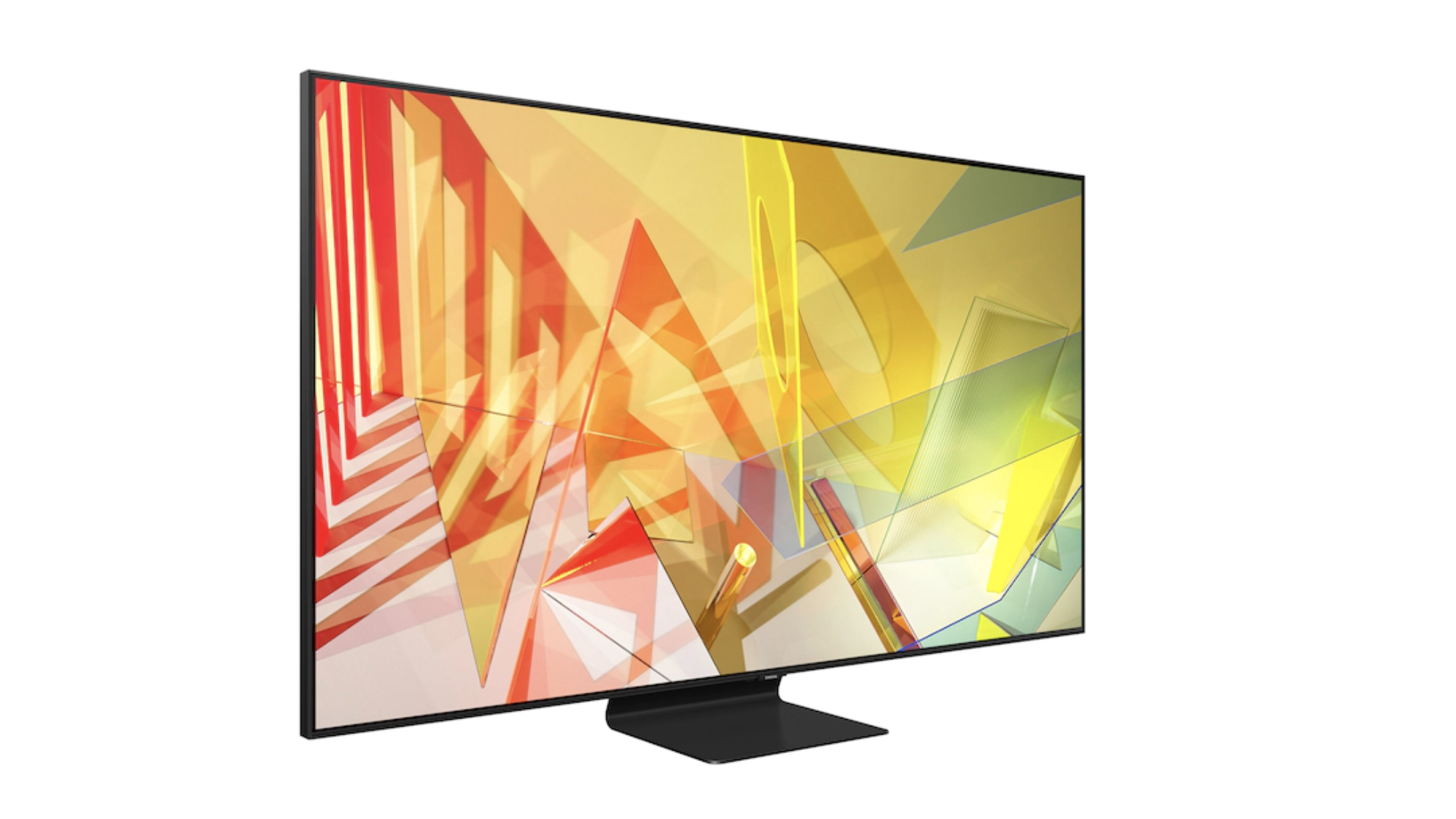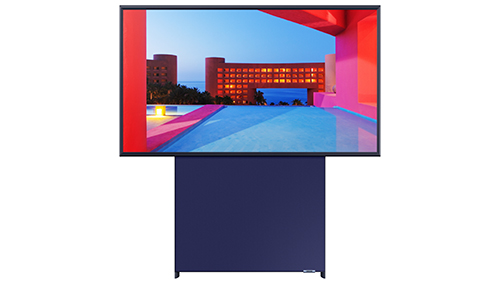Samsung 2020 TV lineup: everything you need to know
A thorough lowdown on Samsung's 2020 TV models

Samsung's TV lineup differentiates itself from its rivals' offerings in two ways: by opting for QLED over OLED technology for its premium TVs, and by having several 8K TVs as opposed to just one or two.
It's also arguably the biggest pusher of MicroLED, which is an ultra-premium and uber-expensive next-generation TV panel technology that could, in a few years' time, replace the TV tech currently in our homes.
Indeed, Samsung's TV catalogue is perhaps the most forward-thinking out there, even if much of the consumer world isn't ready for all of it quite yet. But 8K TV and MicroLED aside, Samsung also has its more accessible 4K QLED, 4K LCD and 'lifestyle' TV ranges. And for 2020 these promise to be better than ever – an exciting prospect considering the convincing success of the Samsung 2019 QLED TVs.
We have already clocked up a handful of Samsung 2020 TV reviews this year, with each set gaining the full five star set, so the Korean giant seems to be picking up where it left off last year.
So, should your next TV be a 2020 Samsung model? Please allow us to dive into the ranges to reveal each model and feature...
Samsung 8K QLED TVs: Q950TS and Q800T
“8K demand surpassed expectations in 2019”, according to the Korean giant, so unsurprisingly the Samsung 8K TV lineup has been expanded for 2020.
Samsung's 8K TV ranges are two-strong and multi-model this year, with the flagship Q950TS (65in, 75in and 85in) sitting above the Q800T (55in, 65in, 75in, 82in and 98in, pictured top). In Europe, there will likely be a Q900TS sitting between the two, which spec-wise is identical to the Q950TS but doesn't come with Samsung's OneConnect box.
As you'll see in the model and price breakdown below, the Q800T also offers the most affordable Samsung 8K TV we've seen, priced in-line with Samsung's top-ranging 4K TV from 2019. The 65in variant is £3999/$3500.

Picture
Thanks to next-gen Quantum processors, more advanced AI upscaling trickery, and improvements to Full Array Local Dimming and motion performance, Samsung’s 2020 lineup looks on track to expand upon the company’s recent success.
While in 2019 Samsung focused on enhancing blacks and viewing angles, 2020’s efforts centre around improving brightness, contrast and details.
Samsung’s 2019 8K QLED TVs use machine learning to create a formula for upscaling content with a lower resolution than the panel – a technique adopted by other TV manufacturers – and the 2020 TVs advance the upscaling process by adding a ‘deeper’ algorithm on top. Samsung calls this Deep Learning Super Resolution.
This is a database of images with numerous layers of algorithms, each of which provides a different interpretation of the data that the TV can use to help create the most realistic upscaled picture. Deep Learning SR is a more intricate way of processing data and has been created to make upscaled content look better than ever – a key upgrade we wanted to see based on last year's TVs.
Samsung has improved the efficiency of its Full Array Local Dimming (FALD) system, too, with FALD TVs able to relocate power reserved from darker areas of the panel to the brightest areas that need it most. To this end, Samsung claims to have increased peak brightness in highlights by 20 per cent – and without increasing power consumption either.
This year's QLED 8K TVs will offer tuners with ATSC 3.0, a next-generation broadcast standard that promises support for higher resolution, more realistic audio and interactive experiences, and is designed to usher a new era of 4K (and perhaps one day 8K) over-the-air transmission TV broadcasting.
Then there's AI ScaleNet, which works to solve the inevitable problem of streaming bandwidth for 8K content by compressing content as it leaves the content provider and then restoring it after it reaches the TV – to "effectively cut in half the bandwidth needed for consumers to stream content". Samsung says it’s capable of restoring 95 per cent of an 8K image through this method, and is working with Amazon to utilise the feature for Prime Video.
Samsung is introducing active tone mapping on a per-frame basis for HDR material, too, essentially bringing dynamic mapping to HDR10 so that it works like the intrinsically dynamic HDR10+.
Meanwhile, the new Adaptive Picture+ mode can dynamically optimise the brightness and contrast of the scene playing based on the lighting of your room conditions – and this goes beyond simply tweaking brightness levels.
Sound
The sonic brethren to Adaptive Picture+ is Adaptive Sound+. It aims to improve the clarity of voices when the TV detects an increase in surrounding noise. That’s just the tip of the iceberg when it comes to new sound features for the 2020 8K TVs, though.
Samsung is ramping up its efforts to enhance sound, and to help it achieve that is a new feature called Q-Symphony. It’s a collaboration between Samsung’s 2020 QLED TVs and the Q-series soundbars that aims to produce a more immersive audio experience. Rather than the TV speakers being mute when the soundbar is connected, they will be used alongside the drivers in the soundbar.
As for the audio coming from the TV itself, the enhancement here lies with OTS+ (Object Tracking Sound), which aims better to pinpoint and ‘track’ sounds on the screen to create a more immersive soundfield through the 8K TVs' 4.2.2-channel speaker configuration. The TV achieves this by positioning a soundtrack on a horizontal plane, analysing it and then sending specific sounds to specific speakers on the TV.
Design
The Q950TS is visually the most notable TV in the lineup thanks to its zero-bezel ‘Infinity Screen’ that sees 99 per cent of its front facade dedicated to your TV-watching pleasure. Despite being a Full Array set and having eight speakers around its frame, the Q950 is only 14.9mm thick too.
A new universal guide for Samsung's 2020 TVs will combine OTT services such as Amazon Prime Video, Netflix and Freeview to display a one-stop-shop interface, organised into sections such as On Now and Continue Watching. Which services’ content will be included depends on what service metadata Samsung can pull, but we’re told by a Samsung representative that the bigger services such as Amazon and Netflix will be onboard at launch.
Owners will also be able to see more services at once on the home page's pull-up scrollbar following Samsung's move to change their icons from rectangular to square. In addition to built-in Bixby voice control, there's support for Amazon Alexa and Google Assistant too.

Samsung 8K QLED TV specs
Samsung Q950TS
65in (65Q950TS) £5999
75in (75Q950TS/75Q900TS) £7999 ($7500)
85in (85Q950TS) £11,999
Quantum Processor 2.0 8K
Full Array Local Dimming
Deep Learning Super Resolution
Adaptive Picture+
HDR10+
Adaptive Sound+
Object Tracking Sound+
Q-Symphony
ATSC 3.0 tuners
AI ScaleNet
'Infinity Screen'
OneConnect box
Samsung Q800T
55in (55Q800T)
65in (65Q800T) £3999 ($3500)
75in (75Q800T) £5499 ($5000)
82in (82Q800T) £6999 ($7000)
98in (98Q800T)
Quantum Processor 2.0 8K
Full Array Local Dimming
Deep Learning Super Resolution
Adaptive Picture+
HDR10+
Adaptive Sound+
Object Tracking Sound+
Q-Symphony
ATSC 3.0 tuners
AI ScaleNet
OneConnect box
Samsung 4K QLED TVs: Q90T, Q80T, Q70T, Q60T

Samsung's 2020 4K QLED TV offering comprises the Q60T, Q70T, Q80T and flagship Q90T/Q95T (the latter totes a OneConnect box, the former does not) ranges – replacements for 2019's Q60R, Q70R, Q80R, Q90R QLEDs and RU8000 LCD series. They are available in sizes between 43in and 85in.
The Q80T is where the Direct Full Array panels start, while the Q90T/Q95T exclusively sport Samsung's new Ultra Viewing Angle tech for improved off-axis viewing. The Q80T has fewer local dimming zones than the flagship, and gets an inferior version of this wide-angle tech (as does the Q70T).
The edge-lit Q70T and Q60T models introduce what Samsung is calling 'Dual LED', a system that combines both warm and cool LED backlights to enhance contrast and colour reproduction.
Picture
A lot of the tech inside the 8K TVs also feature in the 4K line-up: improved FALD efficiency, Adaptive Picture+ and Adaptive Sound+ modes, Q-Symphony collaboration, and next-gen Tizen OS.
While the 8K TVs for this year get a next-gen processor, naturally so do the 2020 4K models. The Quantum Processor 2.0 4K harnesses next-generation AI upscaling wizardry that utilises deeper, more nuanced machine learning processing. Whereas the AI on 2019 TV's used machine learning to build algorithms in order to improve picture quality for lower-than-4K content, the new process uses numerous algorithmic layers to advance the effect. Yes, similar to how the 8K sets work.
Sound
The 4K QLEDs also support Adaptive Sound+ and Q-Symphony, but only the Q80T and Q90T/Q950T benefit from Object Tracking Sound – and while 'OTS+' is the term for the 8K TVs’ 4.2.2-channel configuration, it’s just 'OTS' for the 4K TVs’ 2.2.2 speaker set-up.
Samsung 4K QLED TV specs
Samsung Q95T
65in (65Q95T) £2599 ($2500)
Quantum Processor 2.0 4K
Ultra Wide Viewing Angle
Full Array Local Dimming
Deep Learning Super Resolution
Adaptive Picture+
Adaptive Sound+
Object Tracking Sound
Q-Symphony
HDR10+
OneConnect box
Samsung Q90T
65in (65Q90T) $2500
55in (QE55Q90T) £1599
Quantum Processor 2.0 4K
Ultra Wide Viewing Angle
Full Array Local Dimming
Deep Learning Super Resolution
Adaptive Picture+
Adaptive Sound+
Object Tracking Sound
Q-Symphony
HDR10+
Samsung Q80T
49in (49Q80T) £1399 ($1100)
55in (55Q80T) £1599 ($1300)
65in (65Q80T) £2299 ($1800)
75in (75Q80T) £3499 ($2800)
85in (85Q80T) £4999 ($4000)
Quantum Processor 2.0 4K
Full Array Local Dimming
Deep Learning Super Resolution
Adaptive Picture+
Adaptive Sound+
Object Tracking Sound
Q-Symphony
HDR10+
OneConnect box
Samsung Q70T
55in (55Q70T) £1299 ($1000)
65in (65Q70T) £1999 ($1300)
75in (75Q70T) £2799 ($2200)
85in (85Q70T) £3999 ($3300)
Quantum Processor 2.0 4K
Dual LED edge-lighting
Adaptive Picture+
Adaptive Sound+
Q-Symphony
HDR10+
OneConnect box
Samsung Q60T
43in (43Q60T) £799 ($530)
50in (50Q60T) £999 ($650)
55in (55Q60T) £1199 ($700)
58in (58Q60T) $900
65in (65Q60T) £1599 ($1000)
75in (75Q60T) £2299 ($1700)
Quantum Processor 2.0 4K
Dual LED edge-lighting
Adaptive Picture+
Adaptive Sound+
Q-Symphony
HDR10+
OneConnect box
Samsung 4K LCD TV: TU7000, TU8000

At the humble bottom of Samsung's vast TV line-up are two 4K LED ranges. The TU7000 and TU8000 offer very affordable sets (from $300), powered by Samsung's Crystal Processor 4K and supporting HDR (not HDR10+).
They may be the company's most basic but they still work with the Amazon Alexa and Google Assistant voice control platforms, support Apple AirPlay 2, and are built on the Tizen smart operating system.
We have already reviewed the 55in size in the TU8000 range, awarding it the full five stars for its fantastic picture and aggressive pricing. "While the audio is only par for the course, the picture outperforms everything else we’ve seen in its class, and many above it too," we concluded.
TU7000
43in (43TU7000) £329 ($300)
50in (50TU7000) £389 ($350)
55in (55TU7000) £499 ($400)
58in (58TU7000) $450
65in (65TU7000) £599 ($550)
70in (70TU7000) $750
75in (75TU7000) £799 ($1000)
TU8000
43in (43TU8000) £429 ($370)
50in (50TU8000) £499 ($430)
55in (55TU8000) £599 ($500)
65in (65TU8000) £899 ($700)
75in (75TU8000) £1299 ($1200)
Samsung Lifestyle TV: The Frame, Serif and Sero

Thanks to their introduction in 2016, Samsung's Lifestyle TVs such as The Frame and The Serif are now household names in the company's line-up. This year both models have been improved – and they're now joined by a third model, The Sero (pictured above).
The AirPlay 2-supporting Sero is a 43in standing display that mirrors a smartphone screen, rotating for vertical or horizontal orientation. The Sero (which translates to 'vertical' in Korean) has been introduced this year following its initial 2019 launch in South Korea, and could well help Samsung achieve its 2020 goal of selling one million lifestyle TVs, supposedly triple the sales of 2019.
The Frame 4K QLED TV, which as its name suggests borders a TV screen within a picture frame that can also display art, has expanded this year to include 32in and 75in sizes, joining the existing 43in, 55in and 65in sizes. Like the regular QLEDs, the 2020 models have too been upgraded with a Dual LED system, which uses of both cooler and warmer LED around the screen, allowing the intensity of the blue spectrum to be adjusted, and thus helping to reduce light leakage, improve contrast and viewing angle.
The Serif (43in, 49 and 55in) 4K QLED TV, meanwhile, comprises a TV design in the subtle shape of a capital 'I' sat stop a pedestal-like stand.
The Frame
32in (QN32LS03) $600
43in (QE43LS03) £1199 ($1000)
55in (QE55LS03) £1599 ($1500)
65in (QE65LS03) £2199 ($2000)
75in (QE75LS03) £3499 ($3000)
The Sero
43in (QN43LS05) $2000
The Serif
43in (QE43LS01) £1199 ($1000)
49in (QE49LS01) £1299
55in (QE55LS01) £1499 ($1500)
MORE:
Best Samsung TVs 2020: budget, premium, QLED, 4K, 8K
Sony 2020 TV lineup: 4K, 8K, OLED, everything you need to know
LG 2020 TV lineup: LG OLED 4K, 8K, release dates, prices
Get the What Hi-Fi? Newsletter
The latest hi-fi, home cinema and tech news, reviews, buying advice and deals, direct to your inbox.
Becky is the managing editor of What Hi-Fi? and, since her recent move to Melbourne, also the editor of the brand's sister magazines Down Under – Australian Hi-Fi and Audio Esoterica. During her 11+ years in the hi-fi industry, she has reviewed all manner of audio gear, from budget amplifiers to high-end speakers, and particularly specialises in headphones and head-fi devices. In her spare time, Becky can often be found running, watching Liverpool FC and horror movies, and hunting for gluten-free cake.

